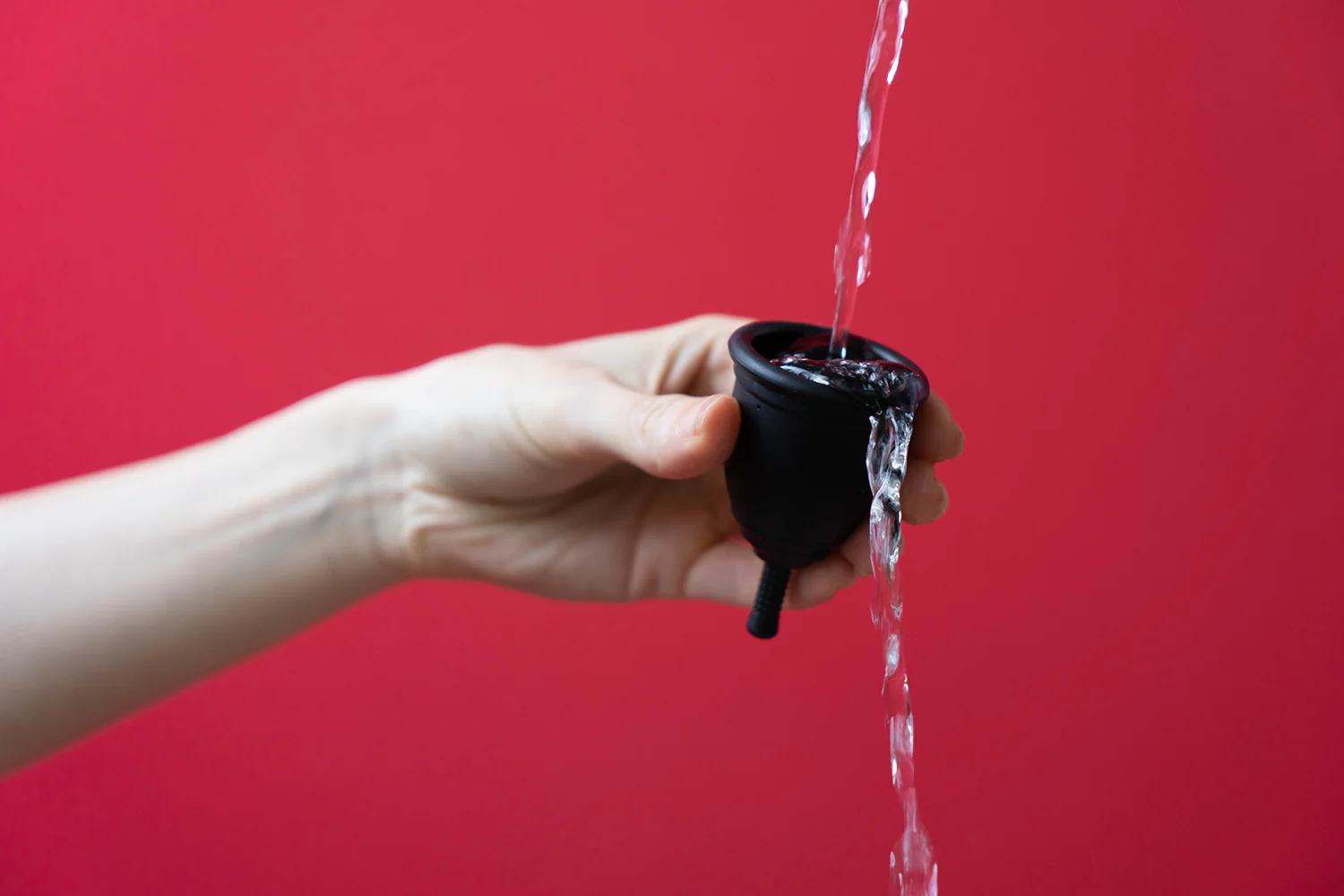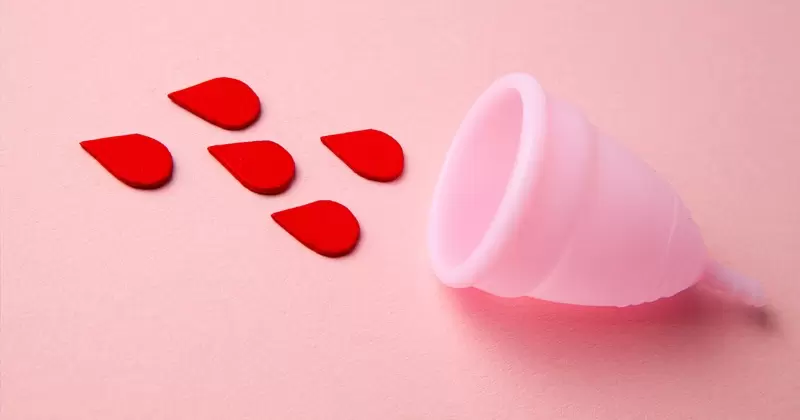If you’re new to menstrual cups, leaks can be part of the learning curve. But don’t let that discourage you. With a little patience and practice, you’ll soon master the art of using a menstrual cup without any leaks. In this article, we’ll guide you through different cup folds and positions of insertion to help you find the perfect fit for your body.
We’ll also address common concerns and provide troubleshooting tips to ensure a leak-free experience. So, if you’re tired of dealing with leaks, keep reading to discover how to make the most of your menstrual cup.
Contents
Menstrual Cup Leaking?

If you’re experiencing leaks while using a menstrual cup, don’t worry – you’re not alone. Leaks can be a common occurrence, especially for beginners. However, with the right techniques and a little patience, you can prevent leaks and enjoy a leak-free period.
Check the Size and Shape
One of the main reasons for leaks is using a menstrual cup that doesn’t fit properly. Make sure you have the right size and shape for your body. Every person is unique, so what works for someone else may not work for you. It’s essential to find a cup that suits your anatomy and provides a proper seal.
Insertion Techniques
Proper insertion is crucial to prevent leaks. Experiment with different folds and insertion positions to find what works best for you. Some popular folding techniques include the C-fold, the punch-down fold, and the 7-fold. Remember to relax your muscles and take your time when inserting the cup. A gentle twist or tug on the stem can also help create a better seal.
Check the Seal
After inserting the cup, ensure that it has fully opened and created a seal against the vaginal walls. You can run a finger around the cup to check if it feels round and smooth. If the cup hasn’t fully opened, it may cause leaks. You can try rotating or adjusting the cup to get a better seal.
Empty the Cup Regularly
Leaving the cup in for too long can lead to leaks. Depending on your flow, aim to empty your cup every 4-12 hours. However, keep in mind that individual flow patterns can vary, so adjust accordingly. Emptying the cup regularly not only prevents leaks but also maintains good menstrual hygiene.
Practice Makes Perfect
Remember, using a menstrual cup is a learning process. It may take a few cycles to get the hang of it and find the right techniques that work for you. Don’t get discouraged by initial leaks – they are a normal part of the learning curve. With practice, you’ll become more confident and experience fewer leaks.
Seek Expert Advice
If you’re still struggling with leaks after trying different techniques, don’t hesitate to seek expert advice. There are numerous online communities, forums, and resources where you can find support and guidance. Additionally, some menstrual cup brands offer customer support to assist with any issues you may encounter.
By following these tips and tricks, you can overcome leaks and enjoy the convenience and eco-friend
Why Is My Period Cup Leaking?

Incorrect Placement
One common reason for menstrual cup leakage is incorrect placement. If the cup is not properly positioned, it may not create a proper seal, leading to leaks. Remember, it’s important to insert the cup high enough in the vaginal canal for it to sit comfortably below the cervix. If it is too low or not positioned correctly, it may not be able to collect the menstrual flow effectively.
Wrong Size
Using the wrong size of menstrual cup can also contribute to leaks. Every individual is different, and finding the right size and shape of cup is crucial for a leak-free experience. If your cup is too small, it may not be able to hold enough menstrual flow, resulting in leaks. On the other hand, if the cup is too large, it may not create a proper seal and lead to leaks as well. Take the time to measure your cervix height and consider your flow before selecting the appropriate cup size.
Inadequate Seal
Another reason for menstrual cup leakage is an inadequate seal. After inserting the cup, it’s important to ensure that it has fully unfolded and created a seal against the vaginal walls. Gently run your finger around the cup to check for any folds or dents that may prevent it from forming a proper seal. If you feel any irregularities, try reinserting the cup or twisting it slightly to create a better seal.
Overflowing Cup
Sometimes, leaks can occur when the cup becomes full and overflows. Menstrual cups can hold a significant amount of menstrual flow, but they do have a capacity limit. If you have a heavy flow or forget to empty the cup regularly, it may fill up and start to leak. Make sure to empty the cup every 4-8 hours, depending on your flow, to prevent overflow.
Residual Blood
Residual blood left on the vaginal walls can also cause leaks. It’s important to thoroughly clean and dry your cup before reinserting it to ensure a proper seal. If there is any blood left behind, it can interfere with the seal and lead to leaks. Take the time to clean your cup with mild soap and water or a designated menstrual cup cleaner to maintain its cleanliness.
Remember, using a menstrual cup takes practice and patience. It may take a few cycles to find the right technique and perfect your cup usage. If you continue to experience leaks despite trying these tips, it may be helpful to consult with a healthcare professional or reach out to the menstrual cup manufacturer for additional guidance. Keep experimenting and don’t get discouraged – soon you’ll be able to enjoy leak-free periods with your menstrual cup.
Why Does My Menstrual Cup Keep Leaking at Night?
If you’ve been experiencing leaks with your menstrual cup during the night, you’re not alone. Many women face this issue, especially when they first start using a cup. But don’t worry, there are a few reasons why this might be happening and some simple solutions to help prevent leaks.
1. Insufficient Capacity
One possible reason for leaks at night is that your cup may not have enough capacity to handle your flow throughout the night. Menstrual cups come in different sizes, and if you have a heavy flow, you may need a cup with a larger capacity. Consider switching to a larger cup specifically designed for overnight use.
2. Incorrect Positioning
Another common cause of leaks at night is incorrect cup placement. If the cup is not inserted properly, it may not create a proper seal, leading to leaks. Make sure to fully insert the cup and check that it has opened up fully inside. Rotate the cup slightly to ensure a good seal. If you’re unsure about the correct positioning, refer to the instructions provided with your cup or consult with a healthcare professional.
3. Overfilling
Leaking can also occur if you leave the cup in for too long and it becomes overfilled. It’s important to empty your cup regularly, especially during heavy flow nights. Try to empty it before going to bed and again in the morning to prevent overflow.
4. Residual Blood
Sometimes, leaks can happen if there is residual blood around the rim of the cup, preventing a proper seal. Make sure to thoroughly clean your cup before inserting it to ensure a good seal. Additionally, wiping the rim with a gentle, unscented wipe can help remove any residual blood and improve the seal.
Remember, leaks can be frustrating, but with a bit of patience and practice, you’ll soon find the right cup and technique that works for you. Don’t hesitate to seek guidance from experienced cup users or healthcare professionals if you’re still struggling with leaks. Keep experimenting and don’t give up – you’ll find a leak-free solution that allows you to enjoy the many benefits of using a menstrual cup.
Is It Normal for Menstrual Cups to Leak?

When it comes to using a menstrual cup, leaks can be a common concern. But rest assured, it’s normal for menstrual cups to leak occasionally. Every person’s body is different, and it may take some time to find the perfect fit and technique that works for you.
Here are a few reasons why leaks might occur:
- Insufficient capacity: If you have a heavy flow or tend to have long periods, you may need a cup with a higher capacity to prevent leaks. Consider trying a larger size or a cup specifically designed for heavy flow.
- Incorrect positioning: Proper placement of the cup is crucial to prevent leaks. Make sure the cup is fully open and positioned low in the vaginal canal. It should create a seal against the vaginal walls.
- Overfilling: Remember to empty your cup regularly, especially on heavier flow days. If the cup becomes too full, it may overflow and cause leaks. Aim to empty it every 4-8 hours, or as needed based on your flow.
- Residual blood: Sometimes, leaks can occur if there is residual blood in the vaginal canal. Be sure to thoroughly clean your cup before reinserting it to avoid any potential leaks.
While leaks can be frustrating, it’s important not to get discouraged. Finding the right cup size, practicing proper insertion techniques, and emptying the cup regularly can greatly reduce the chances of leaks.
If you’re still experiencing leaks after trying these tips, don’t hesitate to seek guidance from experienced cup users or healthcare professionals. Remember, it may take some patience and experimentation to find the leak-free solution that works best for you.
So, keep on trying and don’t give up! With a bit of practice and perseverance, you’ll soon be able to enjoy the benefits of using a menstrual cup without any leaks.
What to Do If a Menstrual Cup Is Leaking – 6 Tips to Reduce Leakage
If you find that your menstrual cup is leaking, don’t worry – it’s a common issue that many cup users face. Fortunately, there are several tips and tricks you can try to reduce leakage and ensure a comfortable and leak-free period experience. Here are 6 tips to help you address the issue:
- Check the cup size: The first thing to consider is whether you have the right cup size. A cup that is too small may not provide sufficient capacity to handle your flow, leading to leaks. On the other hand, a cup that is too large can cause discomfort and may not create a proper seal. Make sure to choose a cup that fits your body and flow.
- Ensure proper positioning: Proper positioning of the cup is crucial to prevent leaks. After inserting the cup, ensure that it is fully open and has created a seal against the vaginal walls. You can do this by rotating the cup or running a finger around the rim to check for any folds or gaps.
- Empty the cup regularly: If you’re experiencing leaks, it could be because your cup is overfilled. Remember to empty the cup every 4-6 hours, or more frequently if you have a heavy flow. By emptying the cup regularly, you can prevent overflow and reduce the chances of leaks.
- Try different folding techniques: Experiment with different folding techniques to find the one that works best for you. Some popular folding methods include the C-fold, the punch-down fold, and the origami fold. These folds can help create a better seal and reduce the chances of leaks.
- Consider using a backup: If you’re still experiencing leaks, you may want to consider using a backup method, such as a panty liner or period underwear. This can provide an extra layer of protection and give you peace of mind, especially during heavy flow days or while you’re still getting used to using a menstrual cup.
- Seek guidance if needed: If you’ve tried these tips and are still experiencing leaks, don’t hesitate to seek guidance from experienced cup users or healthcare professionals. They can provide valuable insights and advice tailored to your specific needs.
Remember, finding the right solution may take time and patience. Don’t get discouraged if the first method you try doesn’t work. Keep experimenting and adjusting until you find what works best for you. With a little
Final Thoughts
By following the tips and solutions provided in this article, you can effectively prevent leaks when using a menstrual cup, especially during the night. It’s important to remember that leaks can occur due to a variety of factors, such as insufficient capacity, incorrect positioning, overfilling, and residual blood. However, with the right cup size, proper insertion techniques, regular emptying, and guidance from experienced users or healthcare professionals, you can find a leak-free solution.
Patience and experimentation are key when it comes to using a menstrual cup. Don’t be discouraged if you experience leaks initially. Keep trying different techniques and folding methods until you find what works best for you. Additionally, consider using a backup method, such as a pantyliner, until you feel confident in your cup’s ability to prevent leaks.
Remember, everybody is different, and what works for one person may not work for another. Don’t hesitate to seek guidance or advice if needed. With a little perseverance, you can enjoy the many benefits of using a menstrual cup, including comfort, cost-effectiveness, and environmental sustainability.
I am a medical student with experience and interest in Women’s health and well-being.